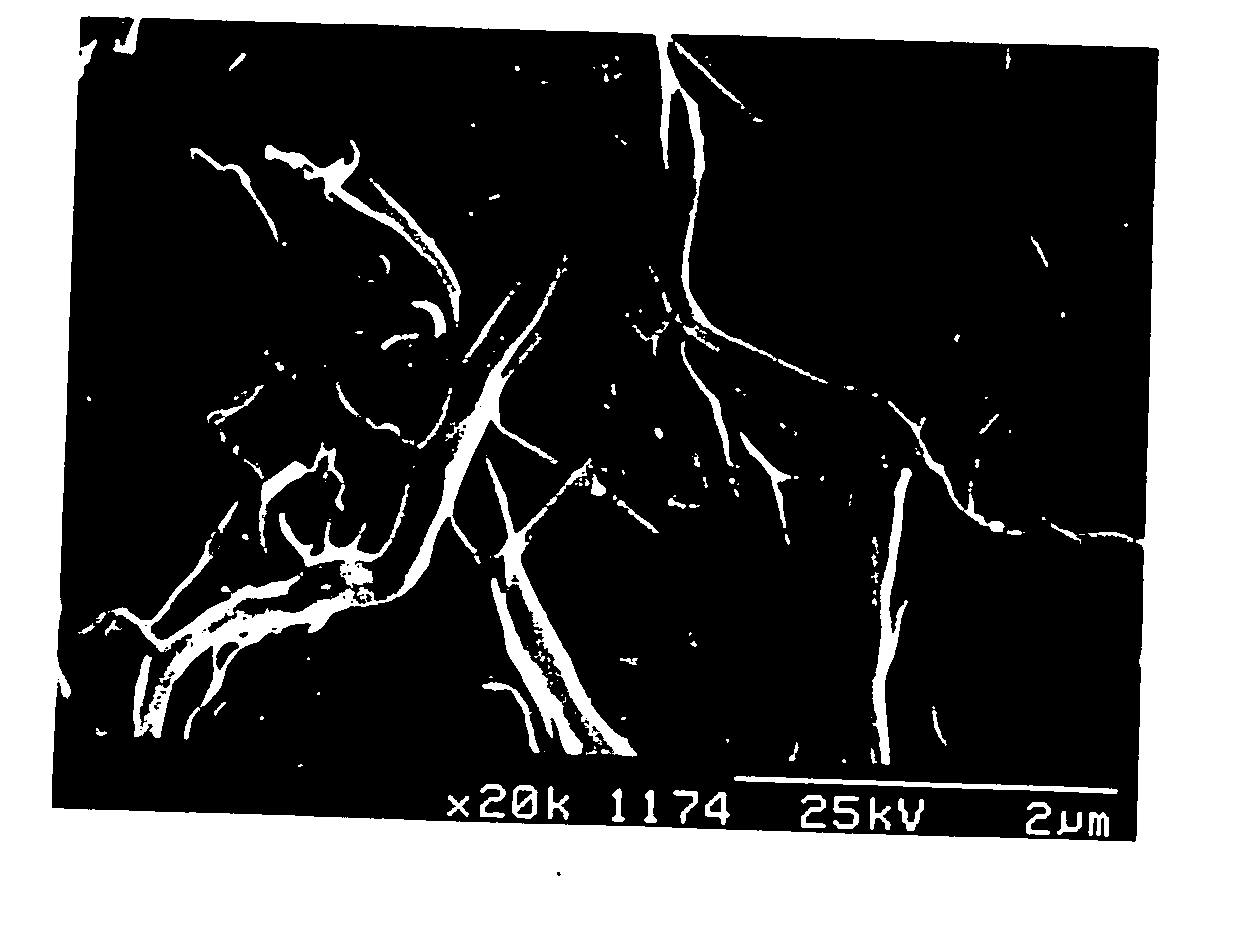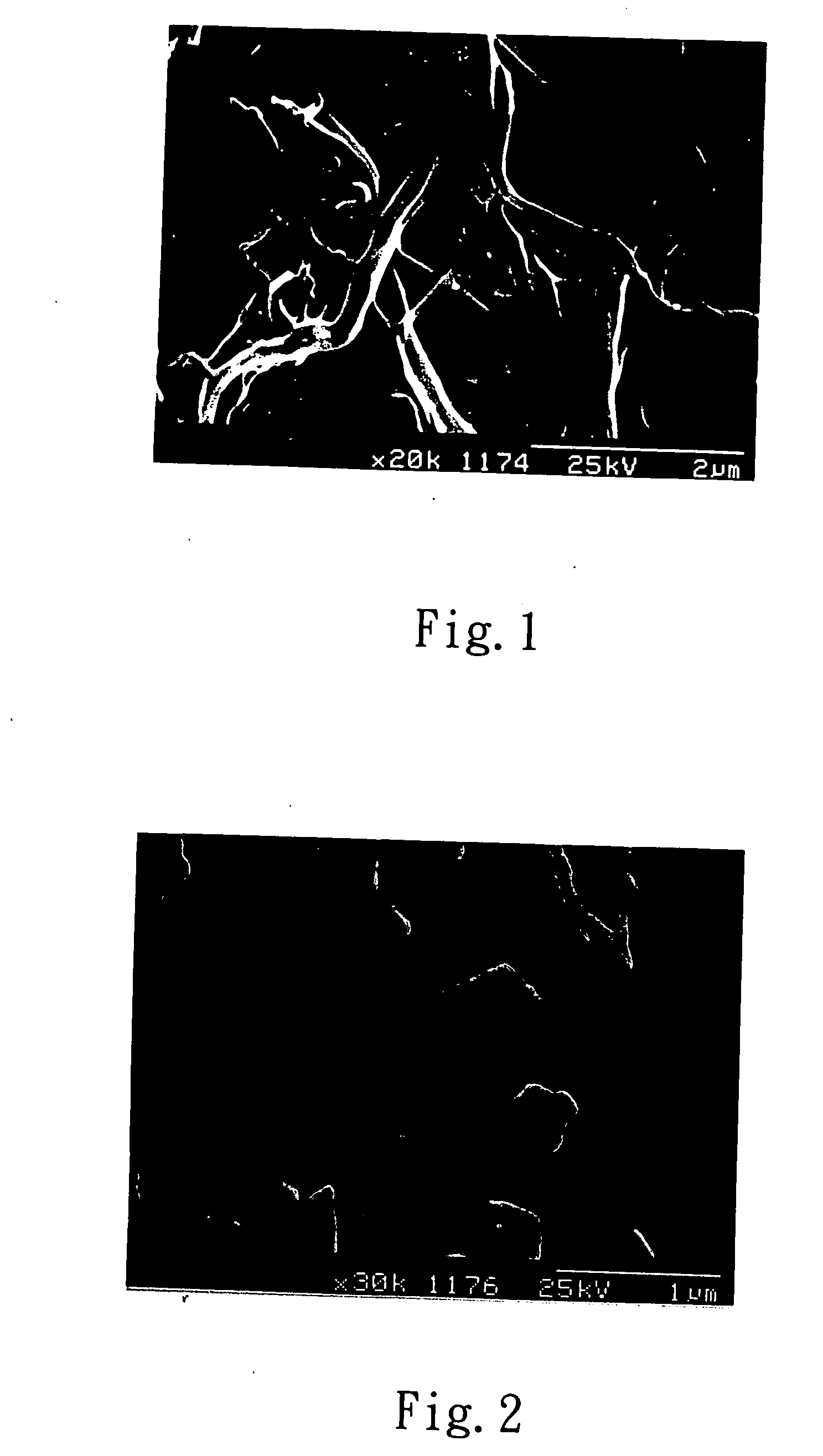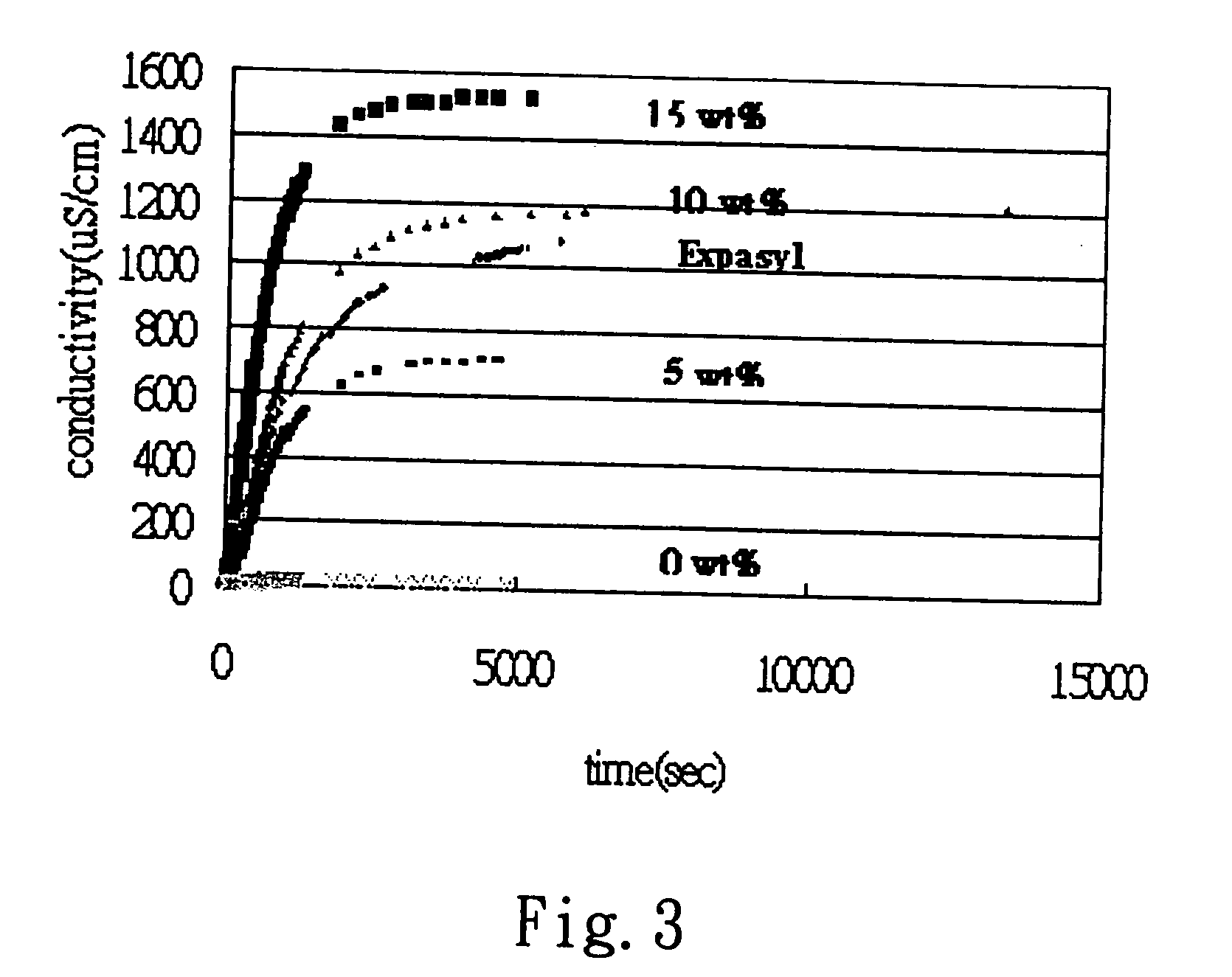Gingival retraction material
a technology of retraction cords and materials, which is applied in the direction of impression caps, dental surgery, teeth capping, etc., can solve the problems of high labor intensity, serious problems, and inability to effectively prevent haemorrhages or oozing from gingival tissue, and achieves high aspect ratio, sufficient yield strength, and increased viscosity
- Summary
- Abstract
- Description
- Claims
- Application Information
AI Technical Summary
Benefits of technology
Problems solved by technology
Method used
Image
Examples
example 1
[0021] Preparation of fibrillated fibers: cellulose fibers of 2 deniers fineness were used to make a bundle of 1,000,000 deniers of 1 meter long, then a high-speed chopping machine was used to chop the bundle of cellulose fibers into chopped fiber strands of 6 mm long, and then a disk grinder was used to process the chopped stands into fibrillated fibers having the shapes of ribbon, fibrils, barbs, or their combination. FIG. 1 shows the typical shape of the fibrillated fibers used in the present invention. The aspect ratio (L / D) of the fibrillated fibers, which is defined as the ratio of the length L to the diameter D of the fibrillated fibers, is greater than 10. Under CSF (Canadian Standard Freeness) test subject to TAPPI T-227, the CSF value of the fibrillated fibers was 102 ml.
[0022] Preparation of fibrillated fiber-contained gingival retraction material: Added 0.2 g astringent, for example, aluminum chloride to 4 g water to form a solution, and then added 2 g fibrillated fiber...
examples 2-10
[0024] Fibrillated fiber-contained gingival retraction materials were prepared subject to the procedure and method of the above-mentioned Example 1, except that the weight percentages of the aluminum chloride, fibrillated fibers, sodium carbonate, kaolin, and water are respectively defined as the following Table 1. Table 1 also shows the measured result of the viscosities of Examples 1-10.
TABLE 1ExampleComposition12345678910Aluminum chloride1.01.015.08.015.015.01.01.011.515.0(wt %)Kaolin (wt %)50.047.050.032.037.550.029.050.031.25.0Sodium carbonate19.030.05.030.017.513.030.07.022.830.0(wt %)Fibrillated fibers10.02.010.010.010.02.010.02.04.010.0(wt %)Water (wt %)20.020.020.020.020.020.030.040.030.540.0Viscosity (106 cP)71.254.540.331.829.924.012.86.223.351.27
[0025] In early days, gingival retraction was achieved by a simple mechanical way with the use of a pure gingival retraction cord. Recently, U.S. Pat. No. 5,362,495 teaches the use of an insert material for widening the gingiva...
examples 11-12
[0033] Fibrillated fiber-contained gingival retraction materials were prepared according to the procedure and method of Example 1, except that the weight percentages of the aluminum chloride, fibrillated fibers, sodium carbonate, kaolin, and water are respectively defined as the Table 2. Viscosities of the prepared gingival retraction materials were examined in the same manner as Example 1. Evaluation on retraction effect on each material was made subject to the animal test procedure of Comparative Example 1. Table 2 shows viscosities of different gingival retraction materials, their retraction effects and related animal test evaluation results.
[0034] The test results show gingival sulcus width to be greater than 0.5 mm after the use of Examples 11 and 12, i.e., high-viscosity gingival retraction materials (31.0×106 and 54.0×106 cP) provide effective gingival retraction effect that was superior to Comparative Examples 1 and 2; there was no statistically significant difference on th...
PUM
| Property | Measurement | Unit |
|---|---|---|
| viscosity | aaaaa | aaaaa |
| viscosity | aaaaa | aaaaa |
| viscosity | aaaaa | aaaaa |
Abstract
Description
Claims
Application Information
 Login to View More
Login to View More - R&D
- Intellectual Property
- Life Sciences
- Materials
- Tech Scout
- Unparalleled Data Quality
- Higher Quality Content
- 60% Fewer Hallucinations
Browse by: Latest US Patents, China's latest patents, Technical Efficacy Thesaurus, Application Domain, Technology Topic, Popular Technical Reports.
© 2025 PatSnap. All rights reserved.Legal|Privacy policy|Modern Slavery Act Transparency Statement|Sitemap|About US| Contact US: help@patsnap.com



